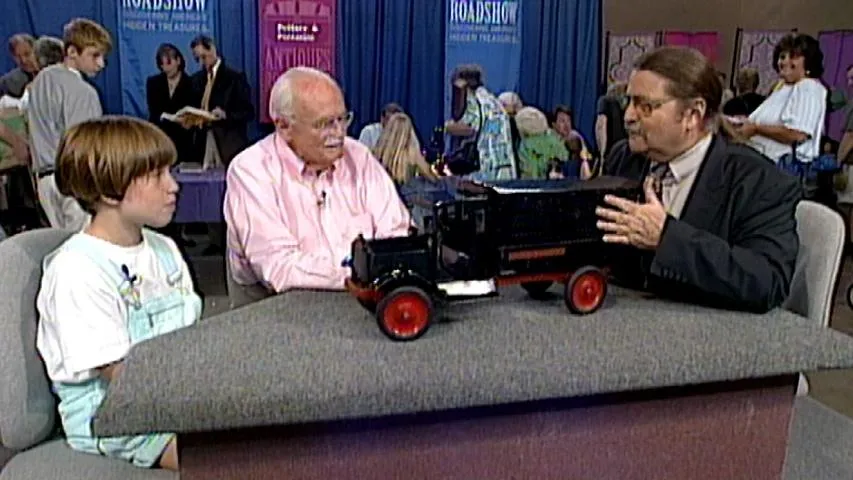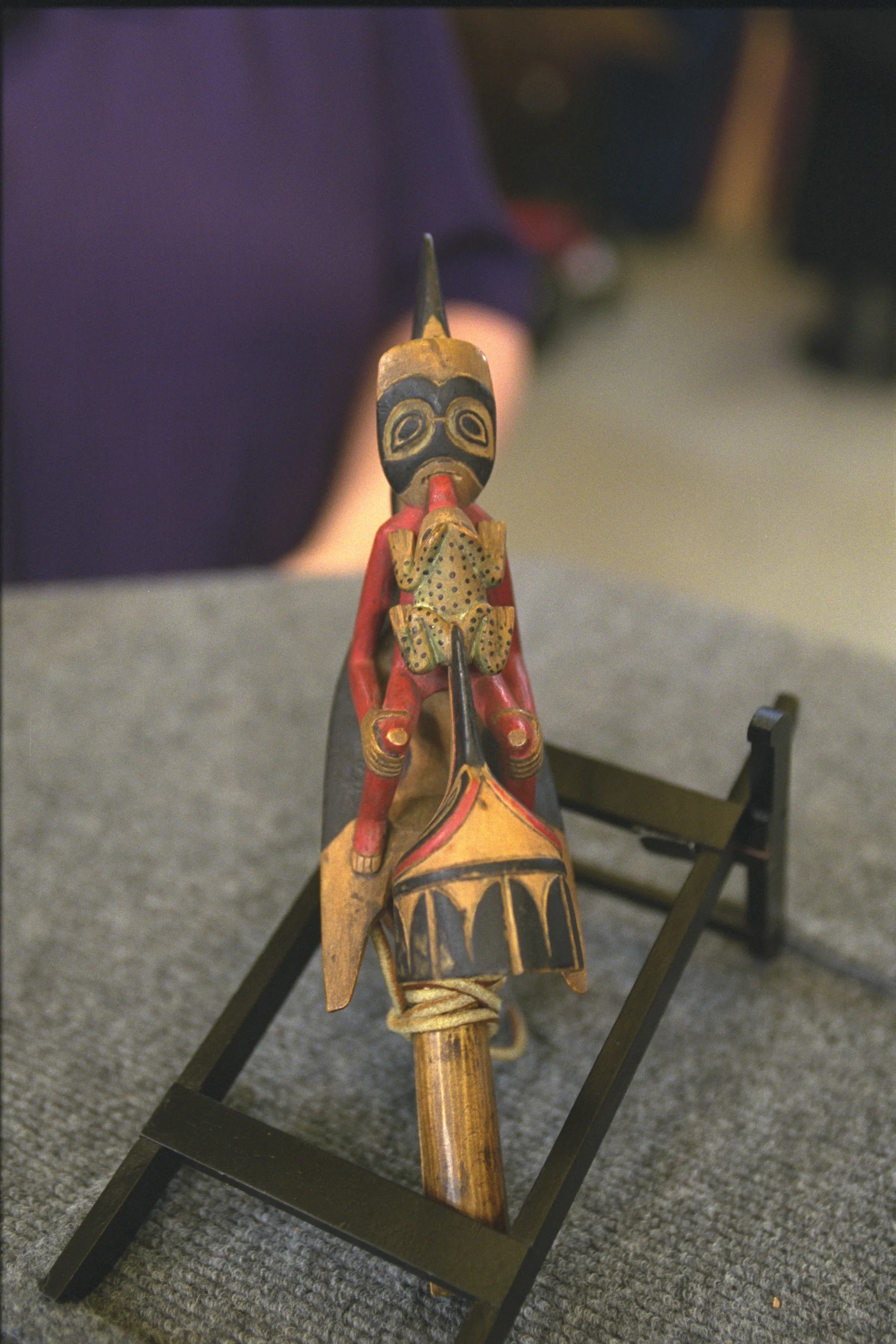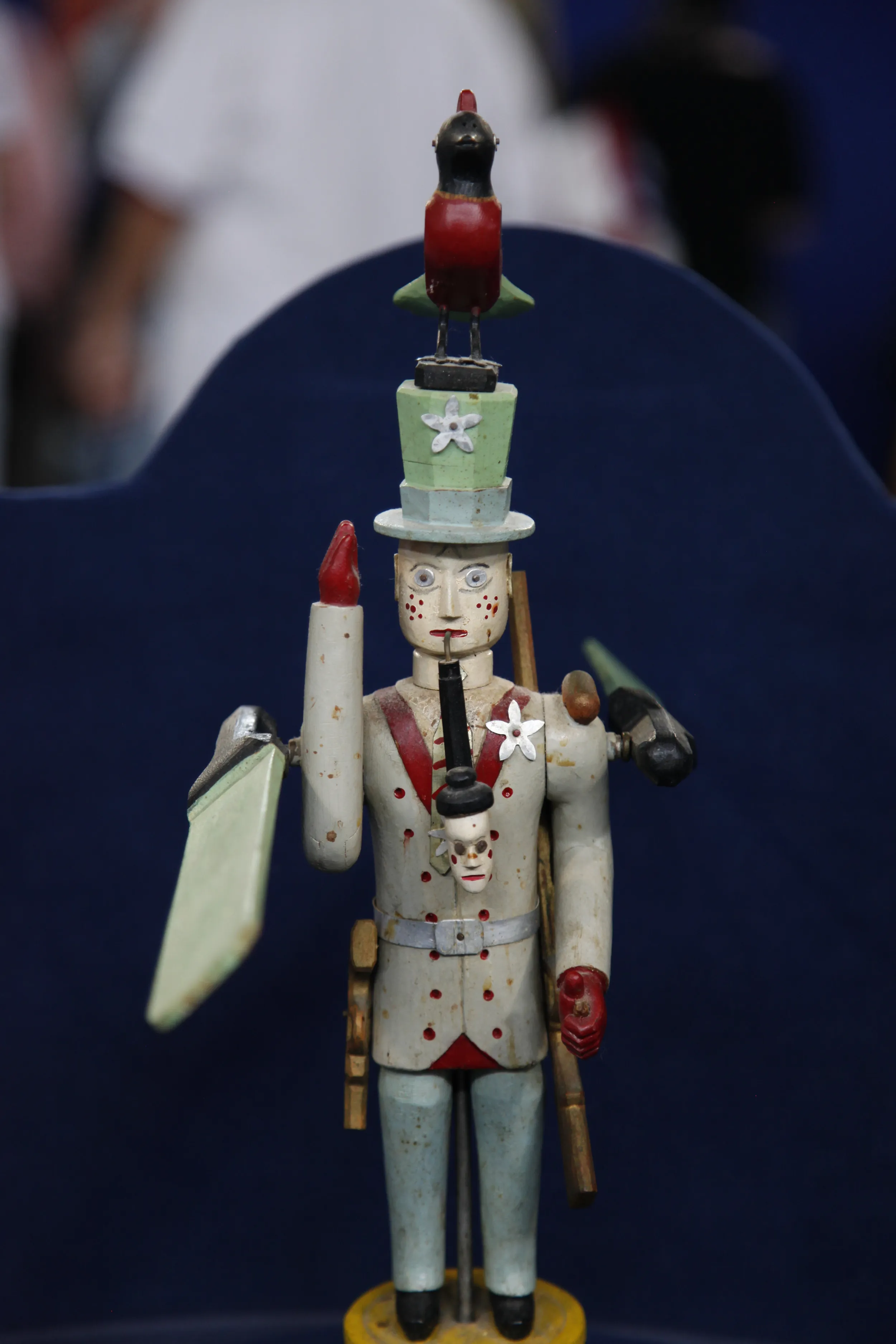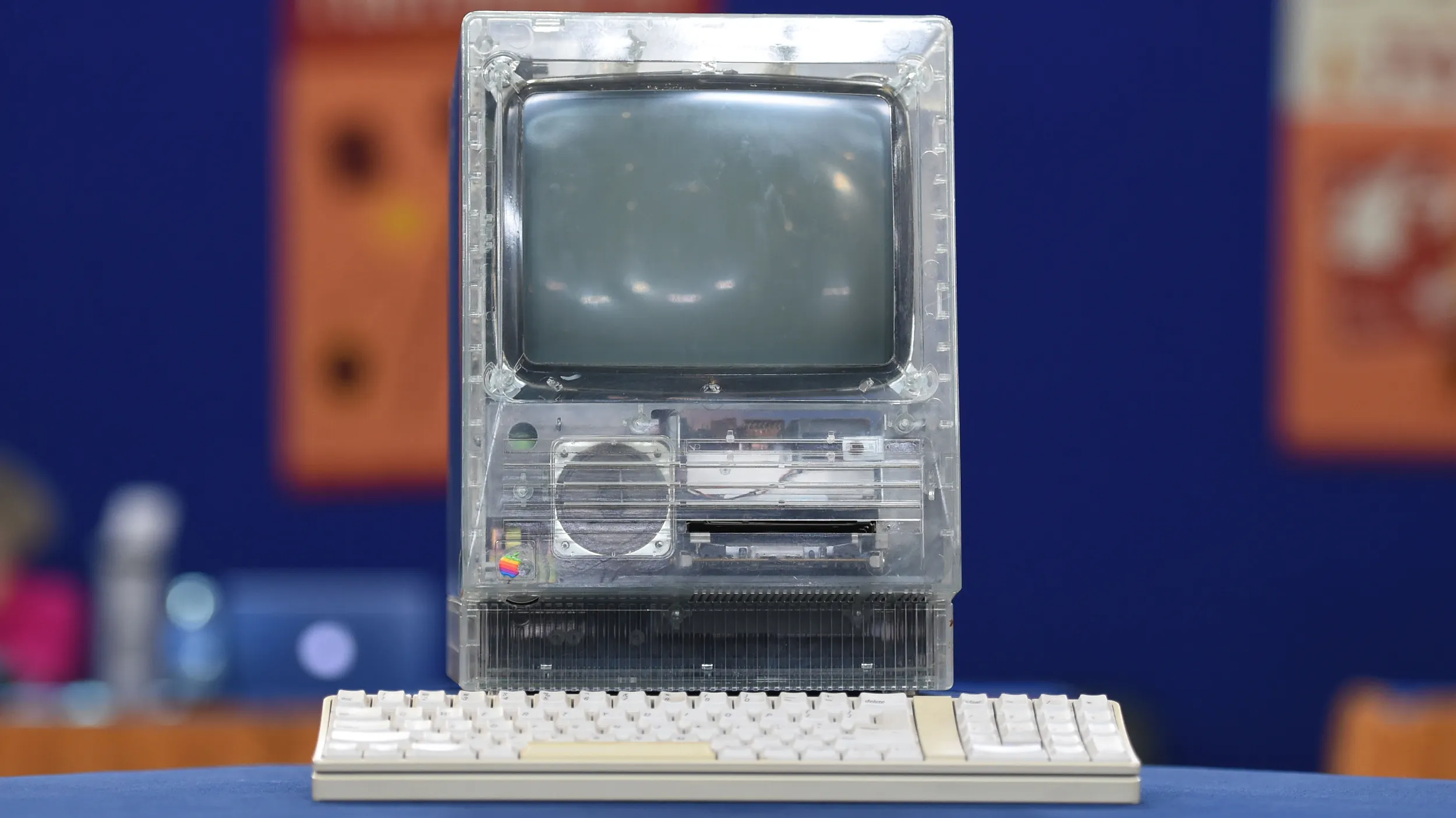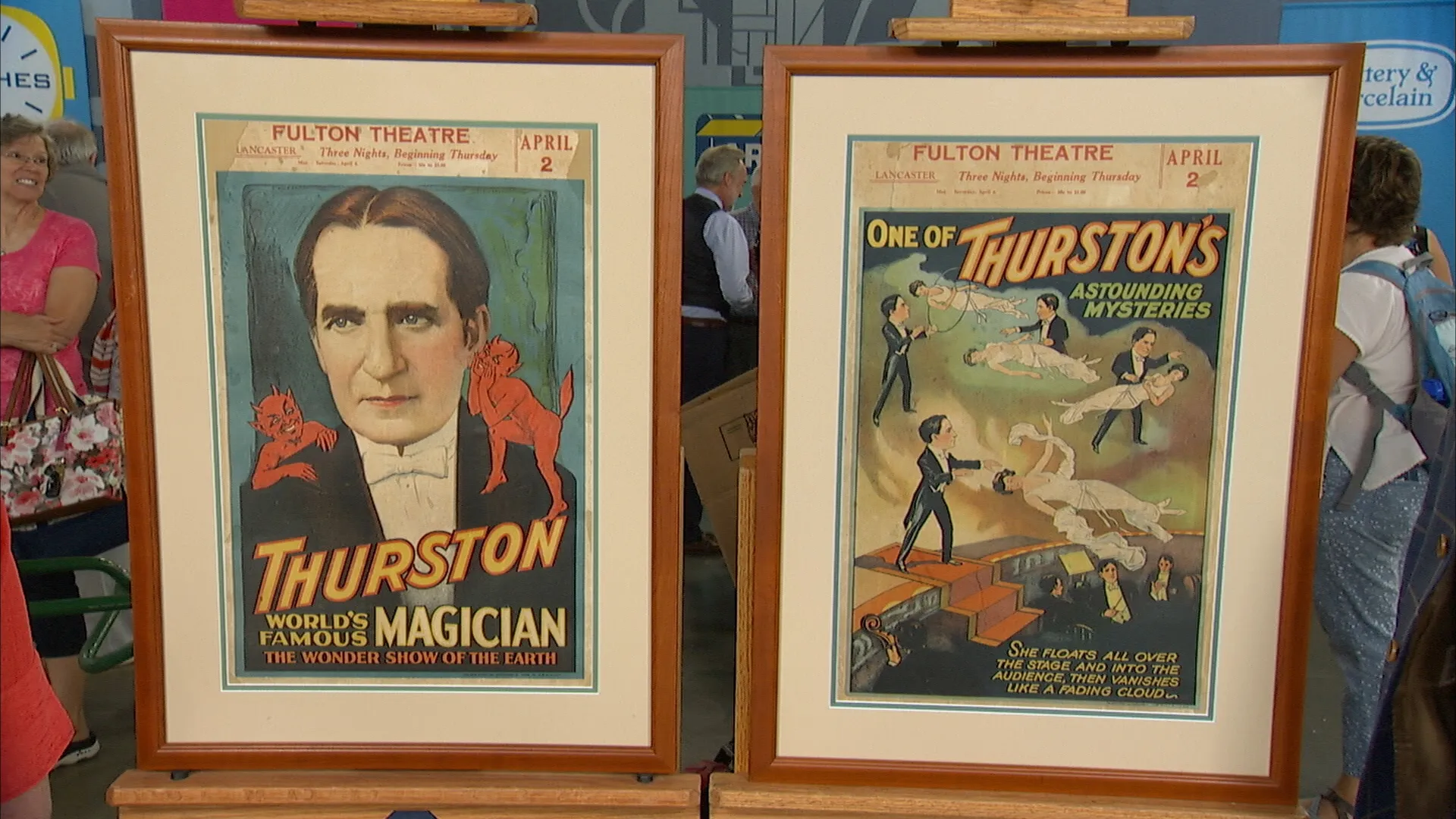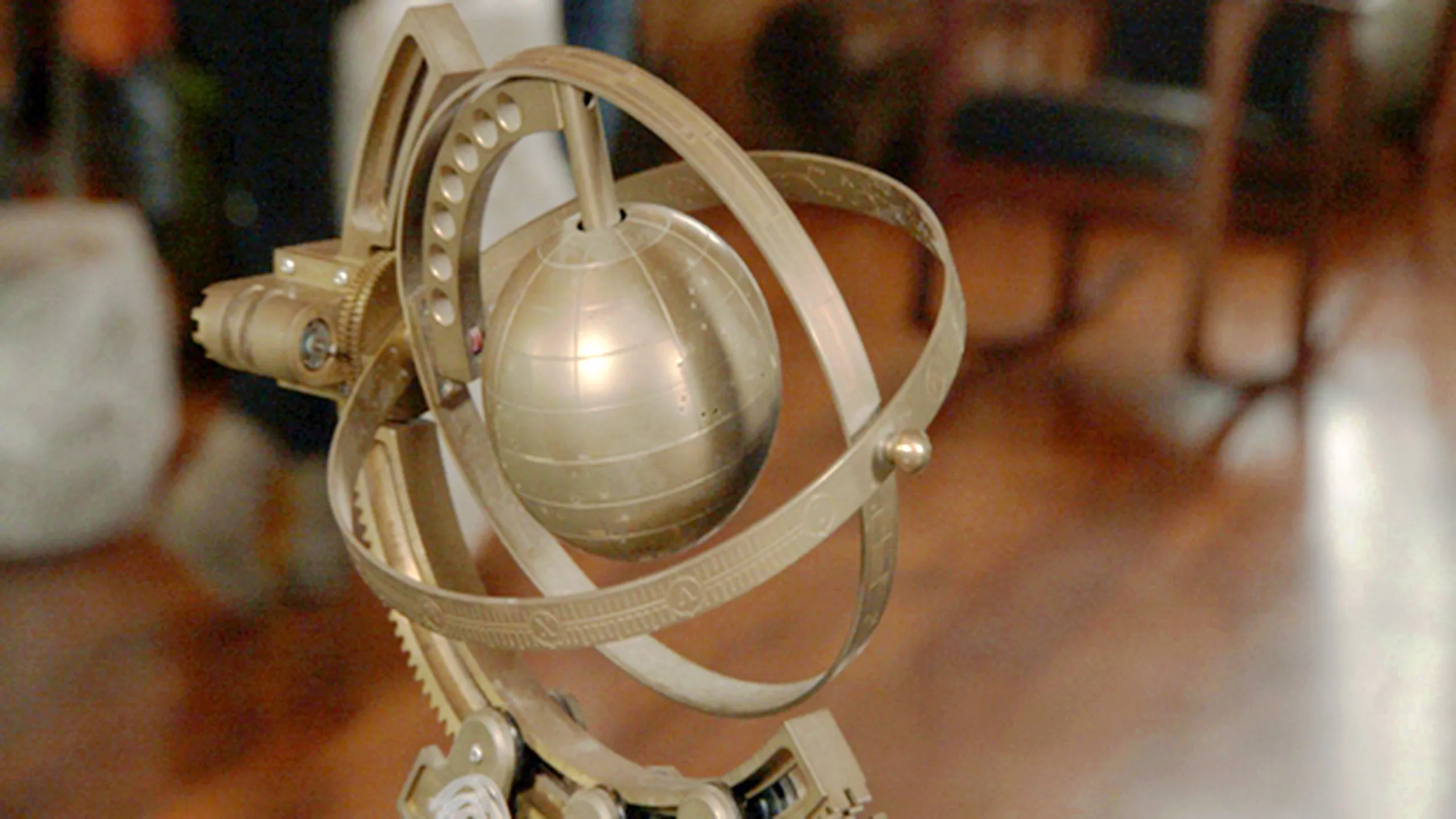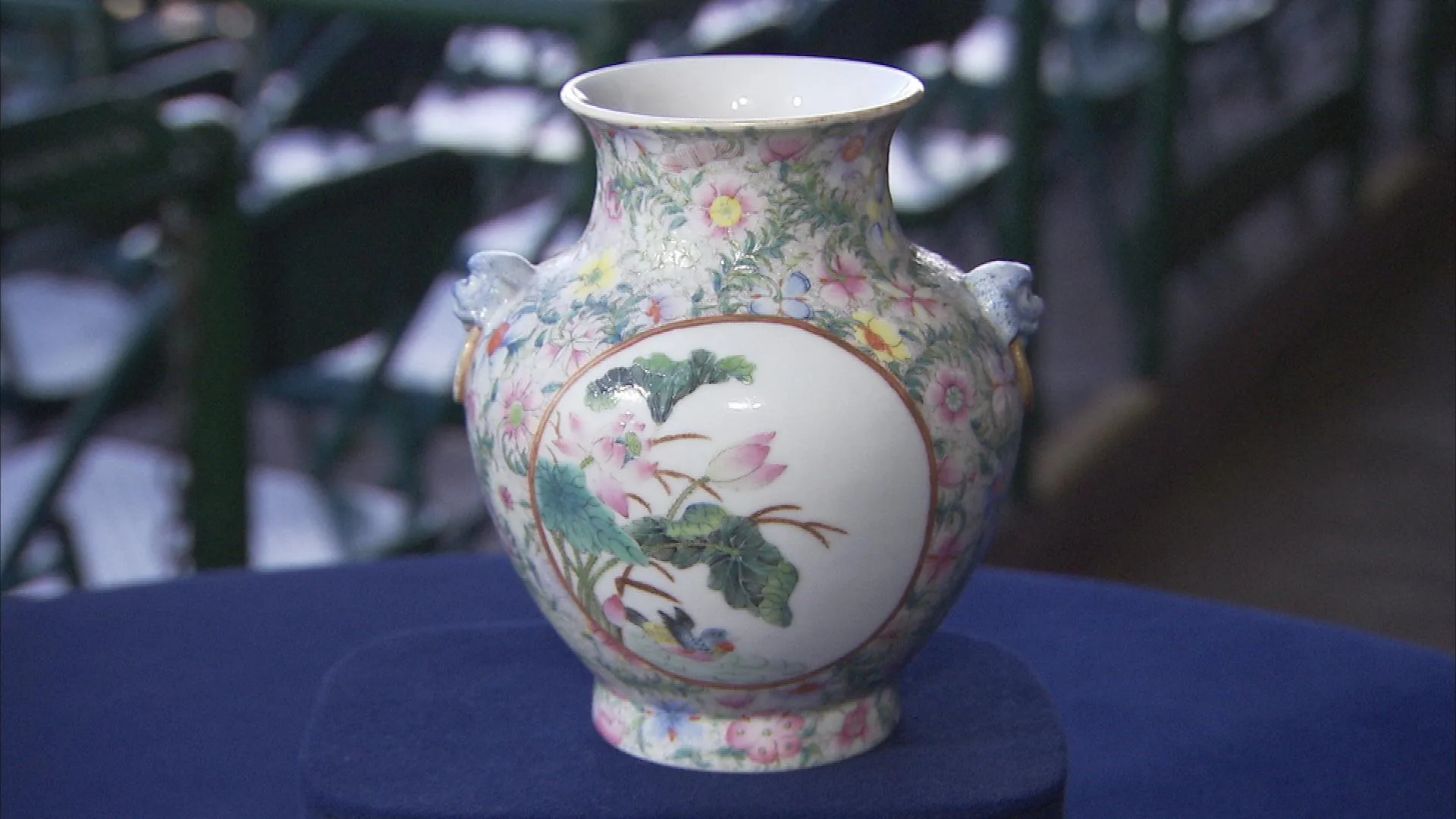GUEST: As far as I know, it's a table model stereoscope.
APPRAISER: Right. It's a stereoscope. This is a particularly nice one. It was invented by a guy named Alexander Beckers. And the early ones were made as early as 1859, 1858. I would tell you that this one is probably from the 1870s. It's solid walnut. It has two ocular pieces so you can look at these things from two different sides. You can sit one person here and one person here on the back side of the table and look at these. Let's take a look inside, because that's where the real action is. In the days before television, in order to see other parts of the world, you would do it through a machine called the stereoscope. And these cards that you see in here have two identical images on either side. Let's take one out and look at it. You see they're two identical images that were taken with a stereoscopic camera, a camera with two lenses that were set about the distance apart as your eyes are. So when you look at this through a stereoscope, these two images become fused to provide depth. It actually looks like a three-dimensional photograph. These photographs from about 1860 until the early part of this century were the most common form of parlor entertainment in the United States. And what's very interesting about these is that... Where'd you say you're from, New Albany, Indiana?
GUEST: New Albany.
APPRAISER: This is by C. Heimberger, photographer, New Albany, Indiana. So it's a local photographer was taking this particular photograph. All these photographs are on a belt that you can swing around and it provides views of Niagara Falls and all sorts of other places. Let's take a look over here because there's another interesting part of this story. Here are some other stereo views.
GUEST: I never really looked at the back of them.
APPRAISER: These are produced by a company called the Keystone View Company of Meadville, Pennsylvania. This drawer was part of an elaborate set that had 600 of these stereo views that were marketed by salesmen so you can have a tour of the world. When you look on the back of this drawer, you see 576-600. There were 600 cards in this set. So you have a part of the set that was probably done around 1910. This was done in the 1870s. Very interesting pair. The market value of this machine and the cards is probably $400 to $600. The cards here, because they're more common and only part of the set, are probably only worth $50 for the whole drawer.

